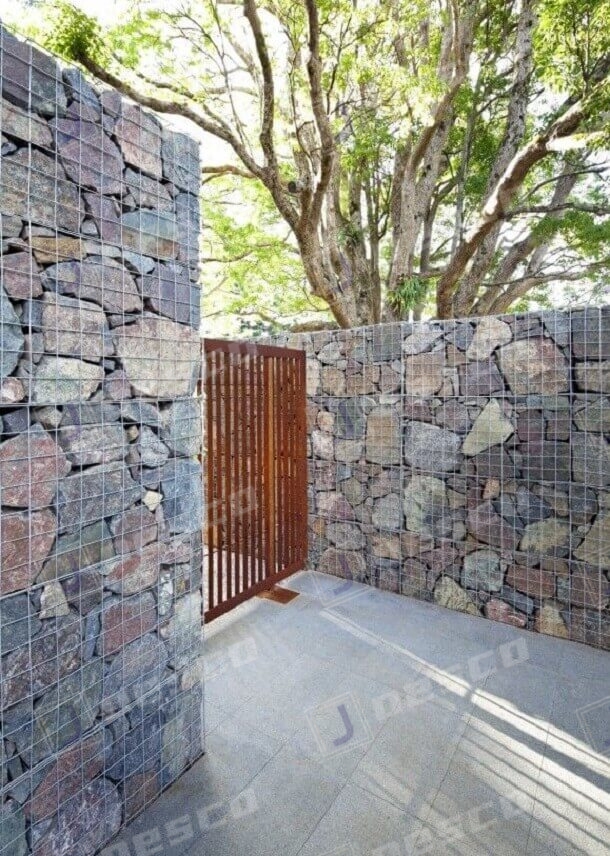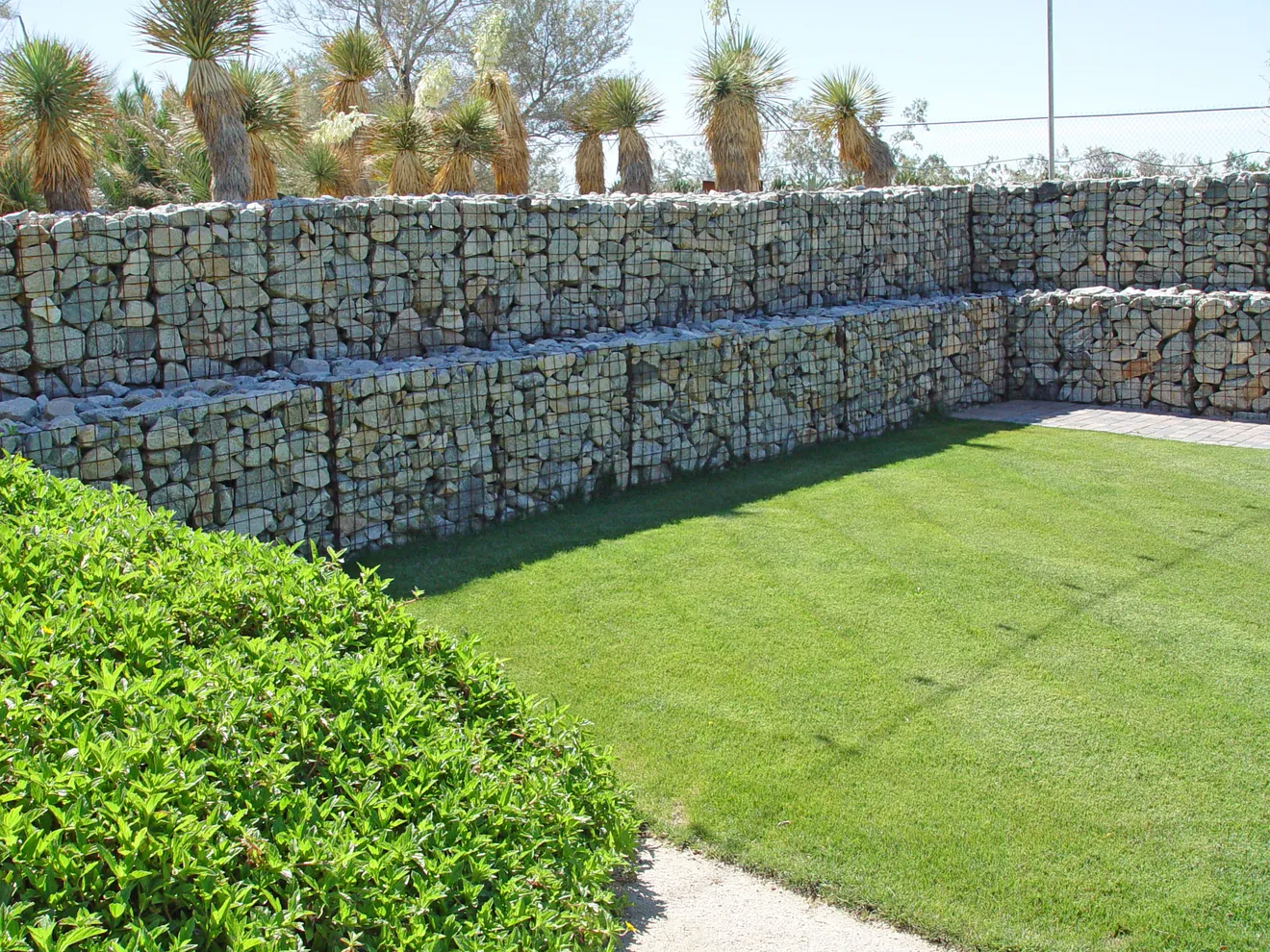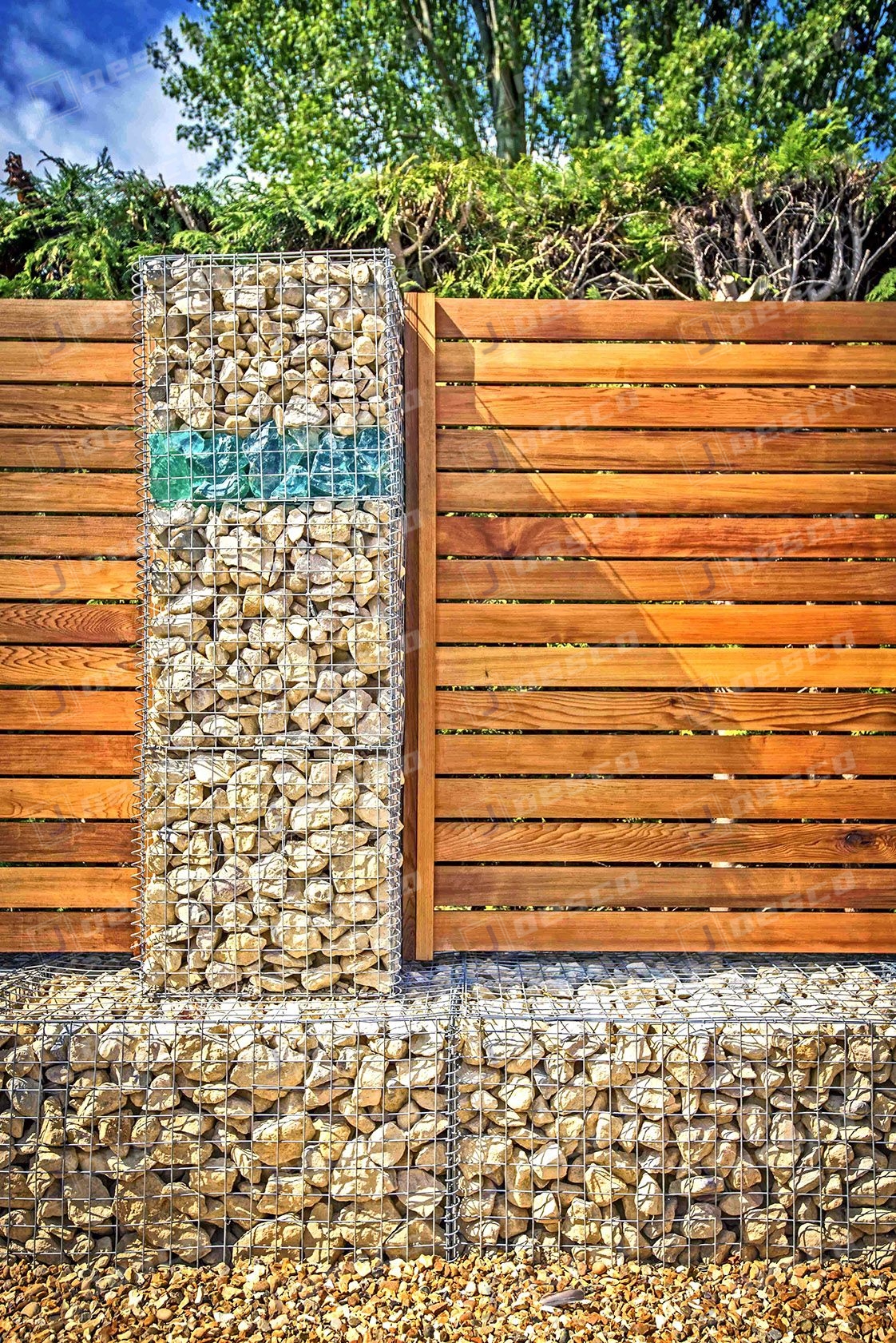Gabion mesh is a structural engineering material typically made of corrosion-resistant metal wire mesh or grid boxes filled with sturdy natural materials such as stones or rock fragments. The design of this material and structure allows for good shaping and molding, making it suitable for creating various landscape features and formations in landscape design. By using different sizes and shapes of stones, one can create distinctive landscapes such as stone walls, seating areas, flower beds, water features, and even mimicry of natural objects. This provides a natural appearance while also offering flexibility in design.

Ecological Gabion, or ecological gabion mesh, is an application that combines the technology of gabion mesh with principles of environmental protection and human-nature harmony. It adds ecological elements to the traditional gabion mesh structure to blend into the natural environment and promote the restoration, protection, and improvement of ecosystems. Here are some important points about the use of gabion mesh in landscape design:
Structure and materials:
Metal mesh boxes: Similar to traditional gabion mesh, ecological gabion mesh primarily consists of corrosion-resistant metal wire mesh or grid boxes to resist corrosion and enhance durability.
Fill materials: Fill materials typically include river stones, mountain stones, or other sturdy natural stones used to construct the structure of the metal mesh boxes.
 Ecological elements:
Ecological elements:
Vegetation: A key feature of ecological gabion mesh is the introduction of vegetation, such as soil and plants, into the fill materials. This helps improve the ecosystem by promoting plant growth, providing habitat for wildlife, preventing erosion, and enhancing air and water quality.
Ecological terracing: Ecological gabion mesh can be designed with terracing structures to facilitate the planting of various vegetation, improving soil quality and hydrological characteristics.
Fish habitats: Ecological gabion mesh near water bodies can be used to enhance fish habitats, providing shelter and breeding grounds.
Applications:
Bank restoration: Ecological gabion mesh can be used to restore eroded and degraded riverbanks and lake shores while promoting the growth of bankside vegetation.
Water improvement: The use of ecological gabion mesh around water bodies helps reduce pollution in rivers or lakes and improves water quality.
Ecological restoration: Ecological gabion mesh can be used to restore degraded land and ecosystems, promoting the return of plants and wildlife.
 Advantages:
Advantages:
Ecological protection: Ecological gabion mesh offers significant ecological protection benefits, aiding in the improvement and maintenance of ecosystem health.
Sustainability: They contribute to soil protection, water conservation, and biodiversity, enhancing the sustainability of engineering projects.
Natural beautification: Ecological gabion mesh can blend into natural landscapes, providing both aesthetic and ecological restoration benefits.
Maintenance: Despite having ecological elements, ecological gabion mesh still requires regular inspection and maintenance to ensure the stability of the metal mesh and integrity of the fill materials, as well as to promote vegetation growth.
In summary, ecological gabion mesh is a sustainable engineering solution that combines gabion mesh technology with ecological conservation principles. It serves to improve ecosystems, protect the natural environment, and provide aesthetic enhancements. They have broad application prospects in ecological restoration, water resource management, and landscape design.





